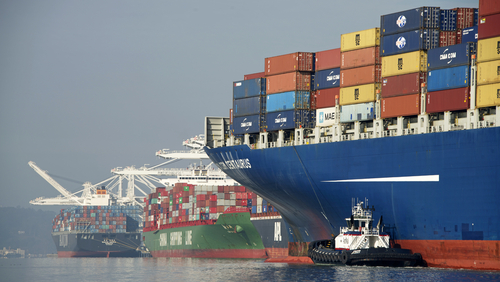After landing as one of the strongest storms to hit the United States, Ian wreaked havoc across Florida, knocking out power to more than 2 million homes and businesses. Residences, bridges, and other infrastructure have been destroyed, with damage estimates ranging from $65 billion to $100 billion, and
Florida Governor Ron DeSantis has stated that recovery will take years. Construction industry groups warn that labor shortages and supply-chain issues will stymie rebuilding efforts.
"Across the board, we are seeing challenges in obtaining all types of building materials in a reliable time frame," said Steve Cona III, president of the Florida Gulf Coast chapter of the Associated Builders and Contractors.
Damage in Florida's Lee, Collier, and Charlotte counties is "devastating," and rebuilding will take a long time and a lot of money, according to Cona. These challenges are exacerbated by ongoing labor shortages, supply-chain issues, and the fact that material costs remain volatile, he said.
Lumber prices have been volatile since the pandemic began, and this year's increase in borrowing costs sent prices plummeting from 2021 highs. While there is an oversupply of material in North America, Kevin Mason of ERA Forest Product Research believes that Ian may cause logistical issues when transporting lumber.
"If you've just had a hurricane, your logistics are going to be a challenge," said Russ Taylor, president of Vancouver-based consulting firm Russ Taylor Global. "The entire construction industry will be shut down for a while until things dry out and the waters recede."
While lumber mill supplies have improved in 2022, there are still issues getting wood to market due to a shortage of rail cars and trucks, according to Taylor. According to him, the storm will slow deliveries to affected areas, resulting in a lumber glut and lower prices. Taylor predicts that building demand in Florida and South Carolina will fall in the immediate aftermath of Ian.
Lumber futures in Chicago fell as much as 6.9% on Thursday, reaching their lowest level in more than two years.
'Some Restrictions'
Home Depot Inc. teams on the ground in Florida are assessing home damage, which will help the company better understand what it might need to supply to Florida sites, according to Pete Capel, the retailer's head of emergency operations. Home Depot places goods in areas along the Gulf Coast and Southeast ahead of hurricane season, and they're either already there or on their way to stores, he said.
"Improvements have been made" since the beginning of the pandemic, according to Capel, but "there are still some constraints in the supply chain overall."
Several insurance adjusters have stated that they anticipate labor and construction material shortages. North American Public Adjusters Insurance Claims Consultants in Cape Coral, Florida, Scott Harris, is concerned about the possibility of significant delays in obtaining rebuilding materials such as lumber, drywall, tile, and shingles.
Homes that survived the storm are vulnerable to additional damage in the aftermath. Properties flooded with several feet of water — "homes that are boarded up, devoid of light or airflow," according to Harris, who has worked in insurance adjustment for more than 20 years — are quickly at risk of mold damage.
Mold that is toxic
"Microbial growth has a life of its own in Florida, and you have to quickly get in and cut out all the drywall to let the wall cavities dry out," said Jason Holzem, a public adjuster at Day Adjusting & Consulting. "Otherwise, your entire property will be covered in mold — it will be on your ceilings, walls, and personal property, and you will be unable to live in that environment." "And then we get black mold, which is toxic."
The wide path of Ian's devastation adds to labor constraints, logistical issues transporting supplies, and volatile material costs. According to Michael Millette, founder of Hudson Structured Capital Management, which focuses on the reinsurance and transportation sectors, everyone rebuilding must deal with the "demand surge" caused by other residents and business owners also trying to recover from the hurricane.
"You have to remember that it costs a lot more to rebuild your house when everyone else in the area is rebuilding theirs," Millette said. "There are only so many contractors and so much construction equipment and material."
Darryl Davis, an adjuster for more than 30 years, said his company, DDavis & Associates Inc., in Coral Springs, Florida, has received a few dozen calls for adjustments so far and expects that number to grow exponentially as residents regain mobile phone service. He intends to begin inspections on Saturday, covering Marco Island, Cape Coral, North Port, and Venice.
"It'll take months and years to get the area back to where it was before the storm," Davis predicted. "I'm sure there will be material shortages." There was already a shortage of materials before this happened, so it will only exacerbate the situation."













